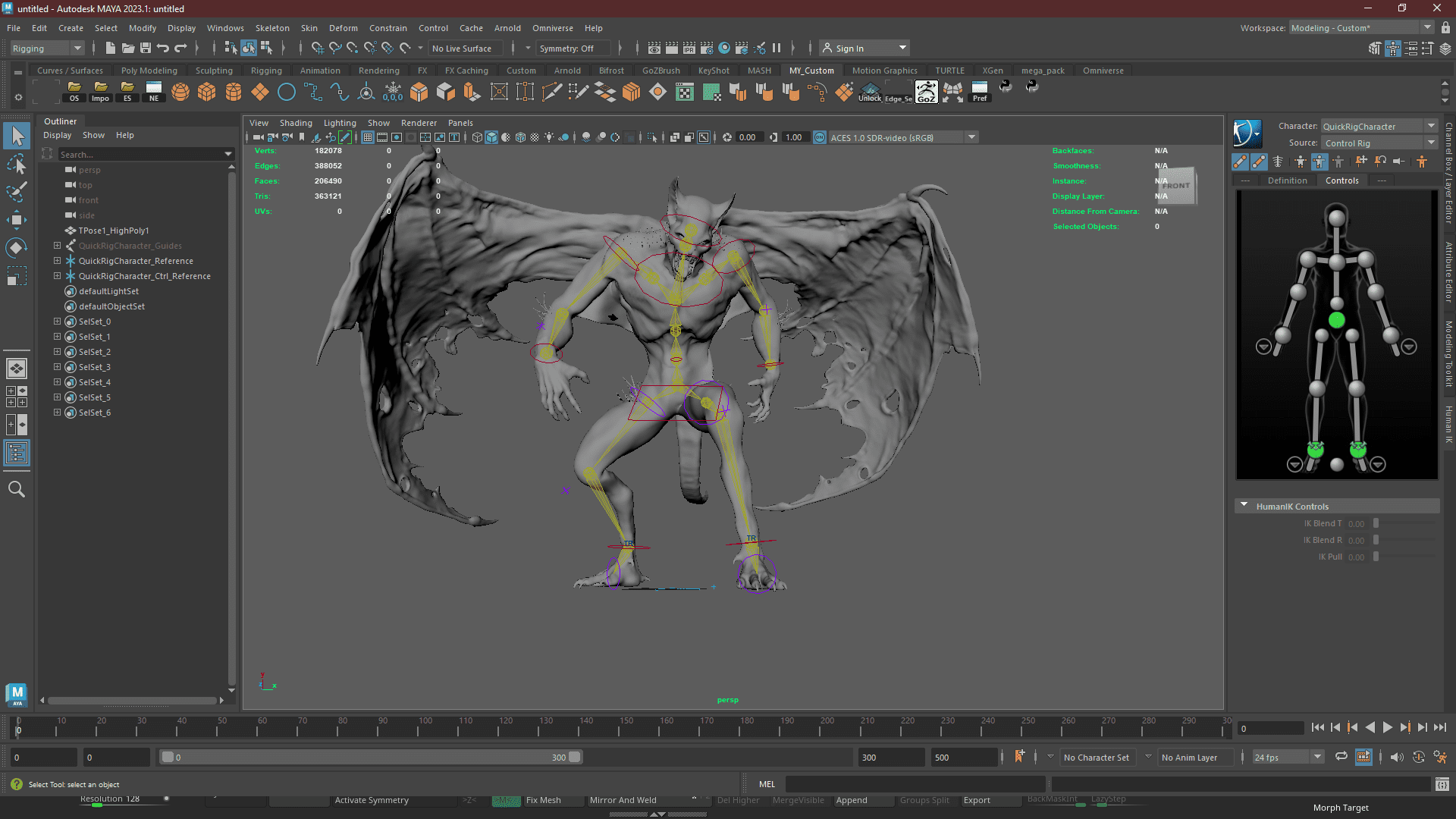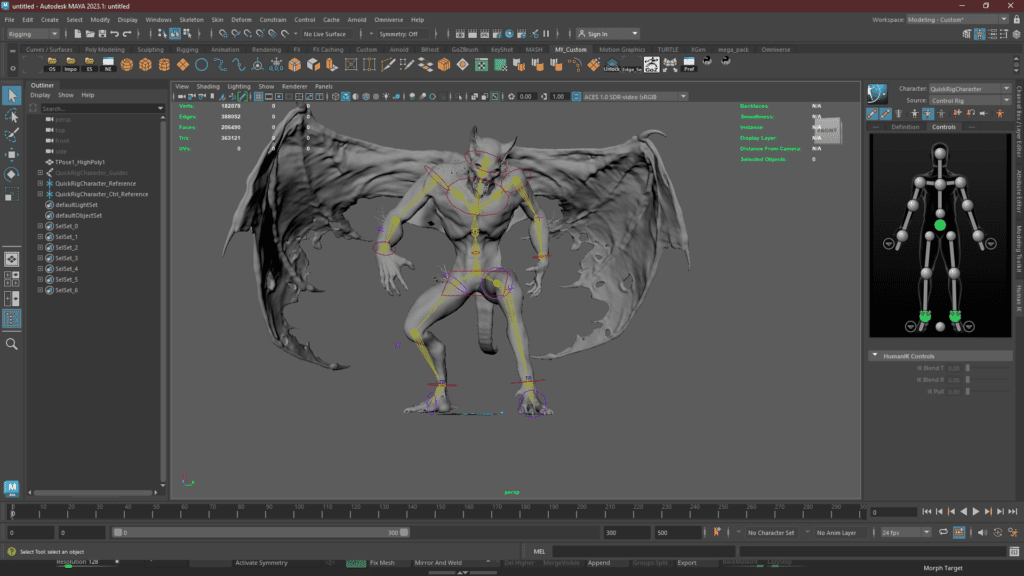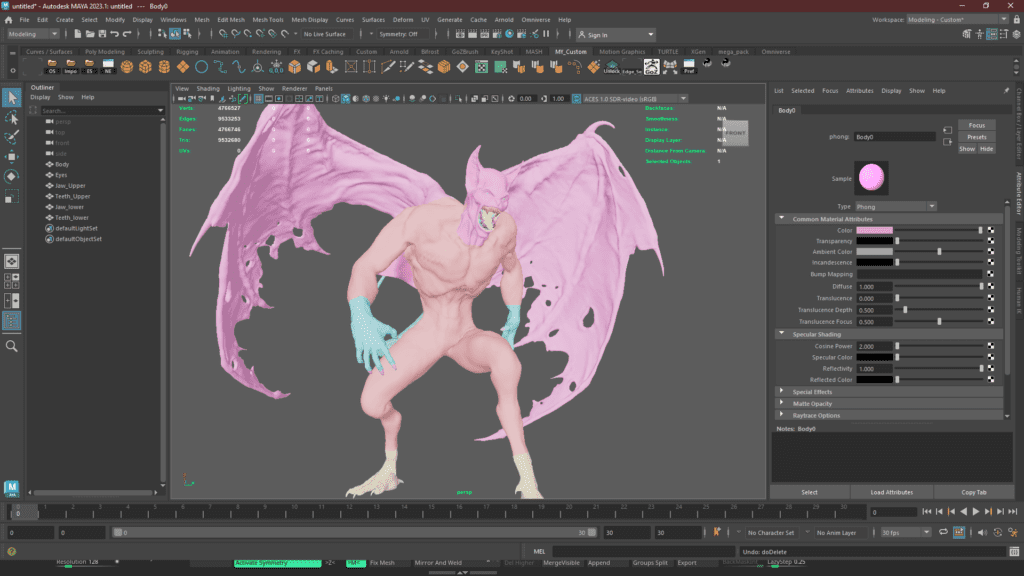
Rigging & Posing
After completing the high-poly sculpting stage of the vampire creature, the next steps involved posing the character, UV unwrapping, and assigning materials to create the final textures.
To bring the character to life and add dynamic poses, I created a new layer and began posing the vampire creature. Using the T-pose as a starting point, I utilized the powerful sculpting tools in ZBrush to adjust the limbs, body posture, and facial expression. This process allowed me to create a pose that captured the essence of the character, emphasizing its personality and showcasing its unique features.
To achieve the desired pose and make the character poseable for potential animations, I used Quick Rig in Maya. This tool provided me with an efficient way to rig the character, adding a skeleton structure that allowed for pose manipulation while preserving the sculpted details.

UV Unwrapping
After completing the pose, the next step was UV unwrapping. UV unwrapping involves flattening the 3D model’s surface onto a 2D plane, creating a map that determines how textures will be applied. This process ensures that the textures adhere correctly to the model’s surfaces, providing realistic and accurate results.
Furthermore, I assigned three materials to the vampire creature model to create the textures. The polygroups I had set up earlier played a crucial role in this stage. The polygroups allowed me to assign different materials to specific parts of the model, facilitating the process of texture application and providing better organization and control over the texturing workflow. With the help of these distinct materials, I could emphasize different characteristics of the vampire creature, such as its skin, clothing, and accessories.


By meticulously unwrapping the UVs and assigning materials, I ensured that the textures would align correctly and enhance the model’s visual appeal. This attention to detail and precision in the texturing process significantly contributes to the final quality and realism of the vampire creature.
In summary, the posing and rigging stage brought the vampire creature to life, allowing for dynamic and expressive poses. The UV unwrapping process ensured that the texture application would be accurate and realistic, while the assignment of different materials to specific parts of the model added depth and detail to the overall appearance. These steps were crucial in creating a visually captivating and well-textured 3D model.

